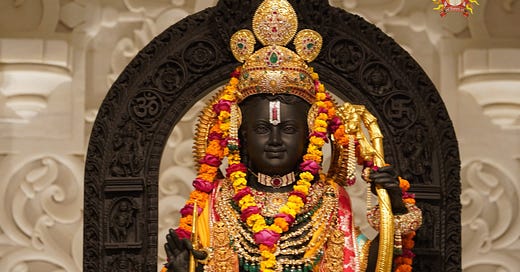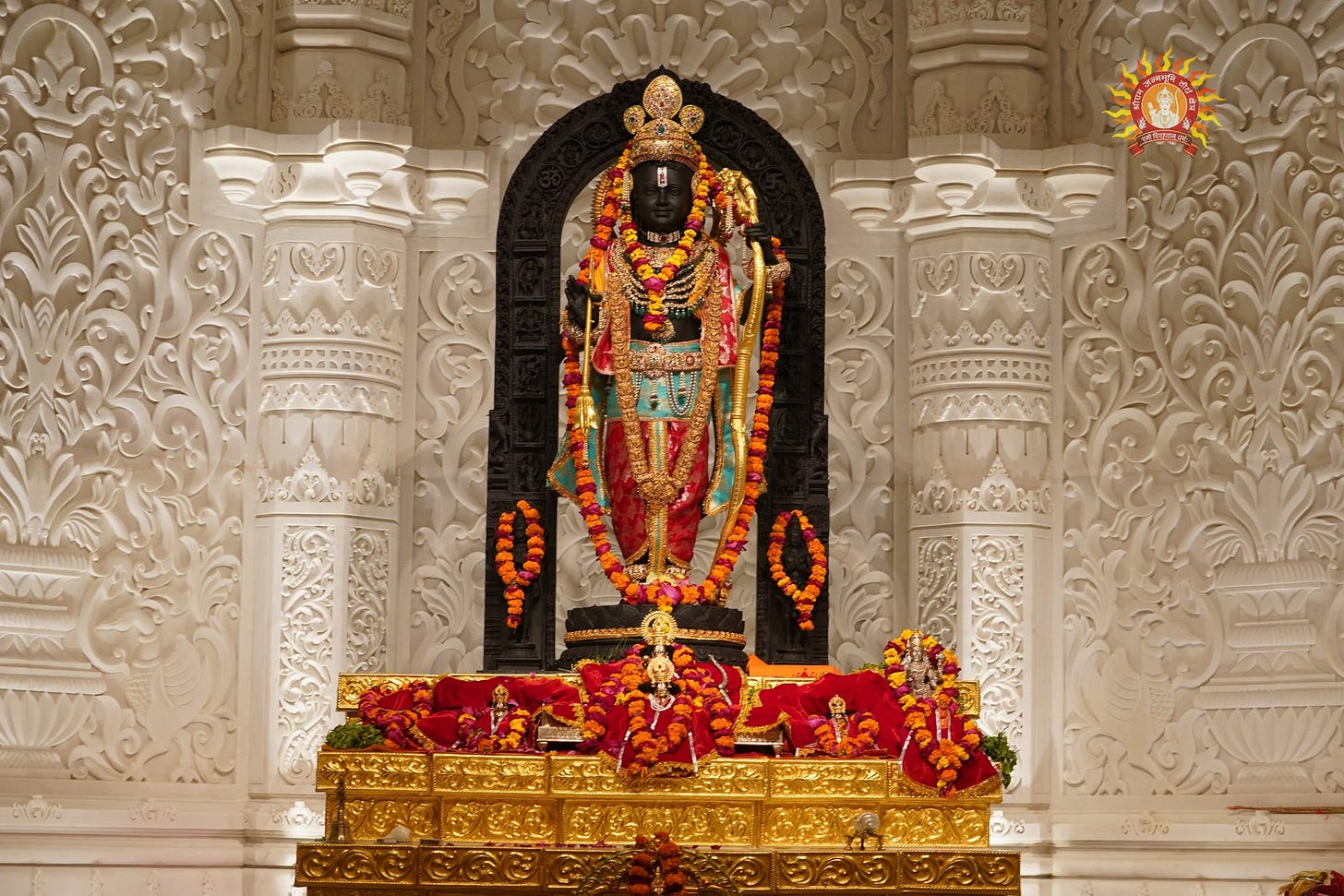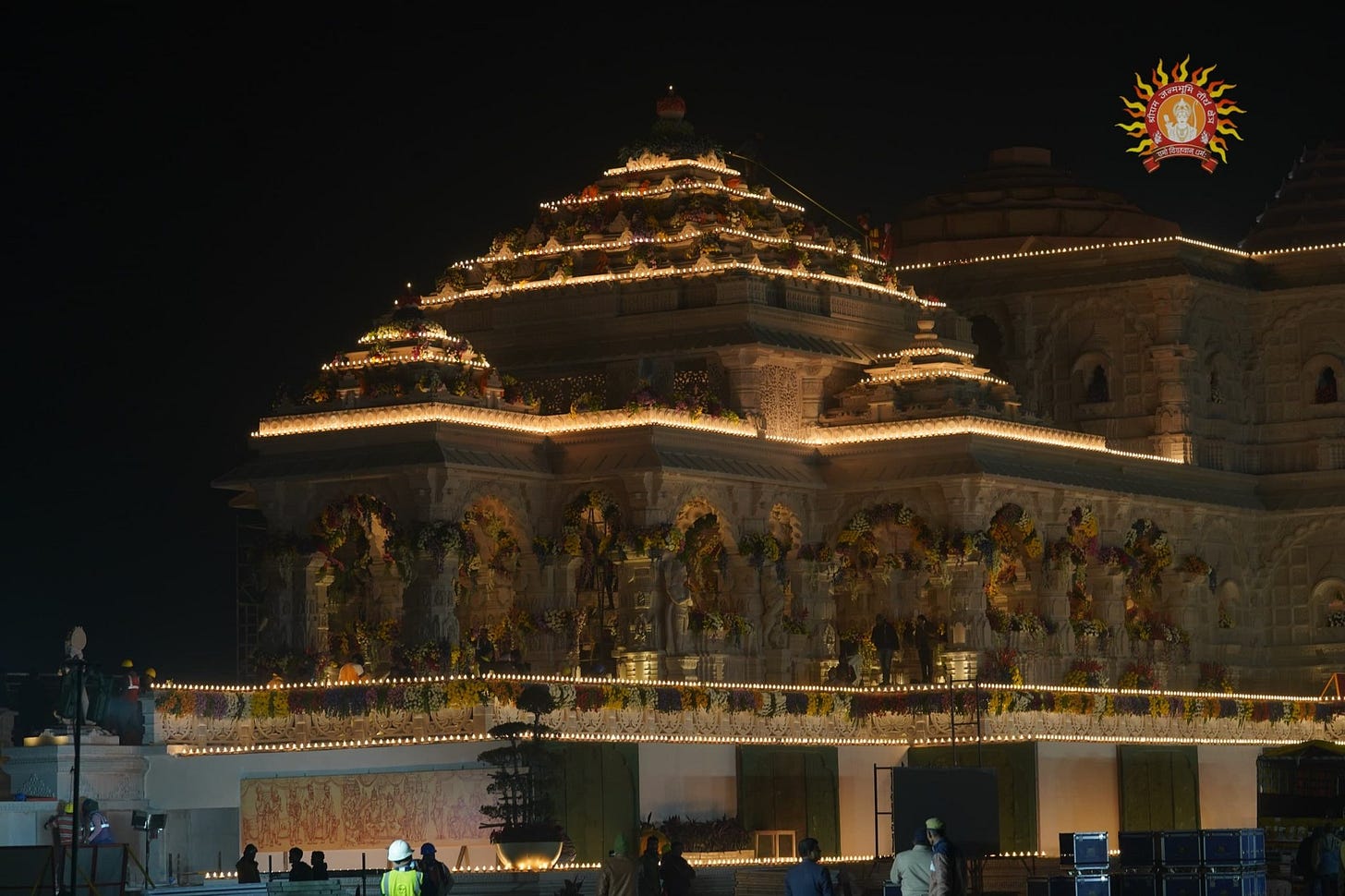Lord Ram in Black Granite: Unraveling the Choice for Ayodhya's Sacred Idol
Deciphering the Symbolism and Rationality Behind the Black Granite Idol of Lord Rama in Ayodhya's Ram Mandir.
Insights into a Historic Choice
One of our esteemed readers, a CEO from Silicon Valley, recently inquired about the unique depiction of Lord Rama's idol in the newly consecrated Ram Mandir at Ayodhya: "Why is the idol of Lord Rama black in color in the newly inaugurated Ayodhya Temple? I have never seen that identity of Rama,” she asked This question opened avenues for our rudimentary research, revealing fascinating aspects of the idol's creation and the profound symbolism behind its colour.
The Significance of the Black Granite
The idol of Ram Lalla in the Ayodhya temple, carved from special black granite, offers an intriguing blend of spiritual symbolism and scientific rationale. This black granite, estimated to be 2.5 billion years old, was sourced from Karnataka and thoroughly tested by the National Institute of Rock Mechanics (NIRM) in Bengaluru. Its attributes - fine-grained texture, high porosity, low water absorption, and high P wave velocity - make it ideal for intricate sculpting while ensuring longevity.
Symbolism and Material Choice in Hindu Iconography
The choice of stone in Hindu idol-making varies by region and deity. In Southern India, black granite is commonly used for ‘murtis’, while Northern India often favors white marble. Interestingly, black granite is believed to embody a balanced composition of the five elements (earth, water, fire, air, and space), making it spiritually and physically suitable for sculpting deities. Additionally, the black colour absorbs and radiates maximum cosmic energy, as elementary high school physics teaches us.
The Story Behind Ram Lalla's Idol
The creation of the 51-inch idol of Ram Lalla, a significant aspect of the Ram Mandir, intertwines geological history and artistic mastery. The black granite, dating back to the pre-Cambrian era, witnessed over half of Earth's history, linking the idol to the ancient roots of civilization. Carved by Arun Yogiraj, a fifth-generation sculptor from Mysuru, the idol represents a fusion of traditional artistry and modern scientific understanding.
The comprehensive testing by NIRM confirmed the granite's suitability for the subtropical climate of Ayodhya, ensuring the idol's durability for thousands of years. Union Science Minister Jitendra Singh had highlighted that the temple, blending traditional architecture and modern engineering, is designed to last over a millennium.
A Sculpture Spanning Time
Arun Yogiraj's six-month devotional endeavour to sculpt the idol from this ancient stone is a testament to the continuity of artistic tradition. His work, including the 30-feet statue of Netaji Subhash Chandra Bose at India Gate, showcases the enduring legacy of Indian sculptural art. The granite's exceptional qualities, such as high density and resistance to water and carbon reaction, make it an exemplary material for such timeless creations.
Concluding Thoughts
The black color of Lord Rama's idol in Ayodhya's Ram Mandir is a confluence of spiritual symbolism, regional traditions, artistic heritage, and scientific rigor. It represents not just a physical manifestation of the deity but also a profound connection to the elemental forces of nature and the ancient history of the Earth. This choice reflects a deep reverence for tradition coupled with a forward-looking approach to preserving cultural heritage for future generations.







